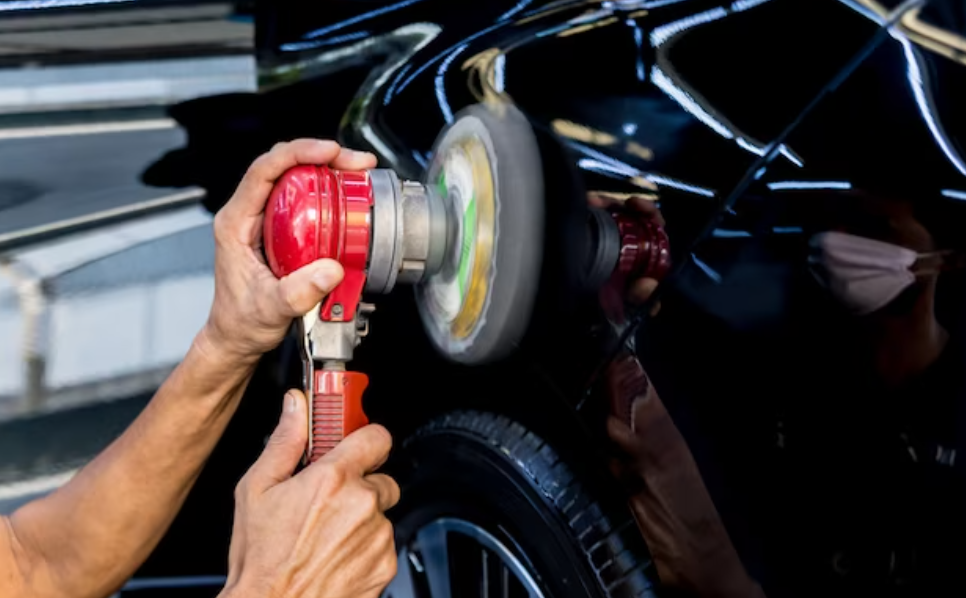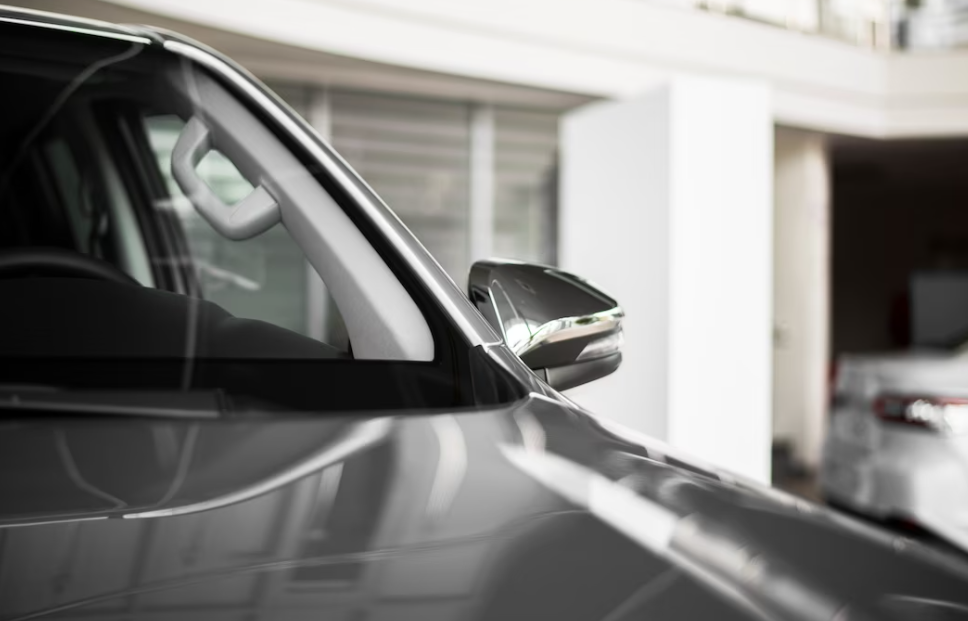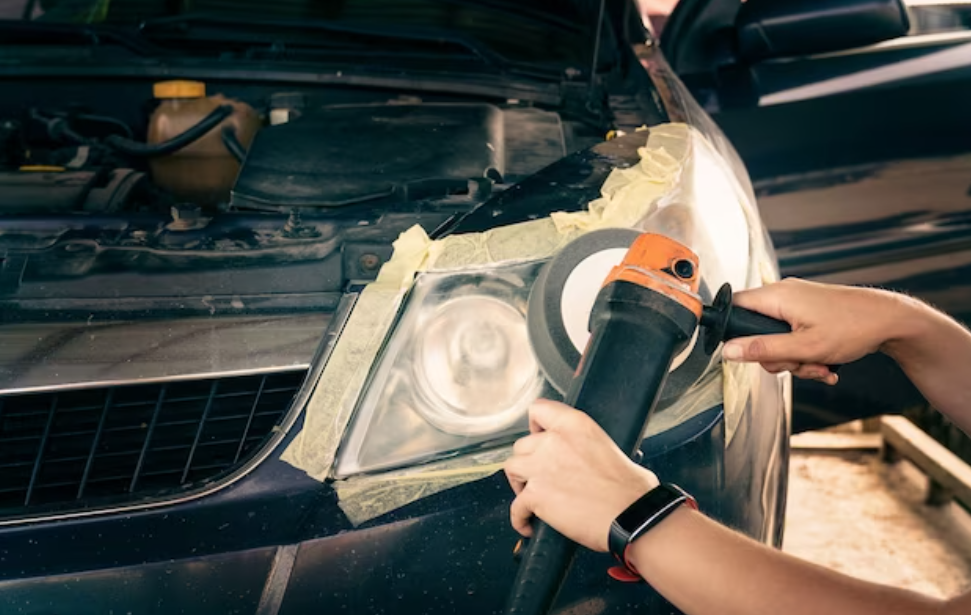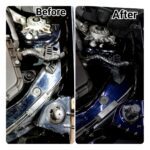
Car detailing is an important part of vehicle maintenance, and it can drastically improve the appearance of a car. Professional detailing can be expensive and time-consuming, however, so it is important to understand the basics before getting started.
This article provides a comprehensive guide to professional car detailing, offering tips and tricks for beginners. The article covers topics such as the materials needed for detailing, the steps involved in the process, and some helpful tips to make sure that the job is done correctly.
It also provides advice on maintaining a car’s exterior after it has been detailed. All of this information will help readers understand the fundamentals of professional car detailing so that they can confidently achieve a high quality finish.
Understanding The Basics Of Car Detailing

Car detailing is an essential process for vehicles to maintain their showroom quality appearance.
It involves prepping surfaces, cleaning solutions, materials, and tools to restore the car’s condition.
The first step in this process is prepping the surface. Using a degreaser or other cleaning solution is recommended to remove any dirt, dust, and grime from the paintwork.
Once this is done, it’s important to use a clay bar or similar product to remove any additional contaminants that may be embedded into the paint. This will help avoid scratching during the polishing and waxing stages of detailing.
After successfully prepping the surface, it’s important to choose the right cleaning solutions for both the exterior and interior of your vehicle.
The type of cleaner used must be appropriate for its intended purpose; using all-purpose cleaner on painted surfaces can cause damage or discoloration as well as reduce gloss levels.
Choosing high-quality products that are compatible with your vehicle type helps ensure optimal results while maintaining safety standards.
With all these considerations in mind, it’s time to move on to selecting materials and tools that will enable you to complete your detailing project efficiently and effectively.
Choosing The Right Materials And Tools

When it comes to car detailing, selecting the right materials and tools is essential for a successful result. The array of car cleaning products available on the market can be overwhelming.
It is important to research and understand what type of products are best suited for the job. Different surfaces require different types of products; for example, when washing a vehicle, special soaps and degreasers should be chosen depending on the type of dirt that needs to be removed. Additionally, there are various techniques that can be used when washing a car such as two-bucket method or foam gun application.
The selection process is not limited to simply choosing the right product, but also includes selecting quality tools such as brushes and mitts. Soft bristled brushes are suitable for cleaning intricate surfaces such as emblems while mitts are better suited for larger surfaces like wheels and body panels.
Lastly, microfiber towels should always be used in order to avoid scratching the paintwork while drying off the car. Having the proper materials and tools will significantly aid in achieving desired results during the detailing process.
Moving forward, detailed instructions will be provided on how to properly detail a car from start to finish.
Step-By-Step Guide To Detailing A Car
Having the right materials and tools is essential for professional car detailing. This includes items such as microfiber towels, sponges, brushes, and cleaning agents specifically designed for automotive use. It is also important to have the right wax or sealant to protect the paint finish. In addition, a wheel cleaner should be used to clean the rims of a car.
The next step in professional car detailing is to start with a thorough washing of the vehicle. Using a two-bucket method with one bucket for suds and one for rinsing will help avoid scratching the paint.
Once washed, any contaminants on the paint should be removed using clay bar or detailing brush. After that, a protectant like wax or sealant should be applied to keep dirt and grime from sticking to the surface.
Finally, wheels should be thoroughly cleaned with wheel cleaner and scrubbed with a brush until they shine like new again. Properly cleaning and protecting your car will ensure quality results after it has been detailed. An essential tip is to always work on small sections at a time rather than rushing through the entire job quickly.
Tips For Ensuring Quality Results

Ensuring quality results when detailing a car requires careful evaluation of techniques and investing the necessary time.
It is important to inspect the car thoroughly prior to any detailing work, in order to identify any potential issues that might arise during the process. This inspection should be done both inside and outside of the vehicle, paying special attention to areas that may have experienced damage or wear over time.
The next step is to choose the appropriate materials and tools for the job; this includes selecting high-quality products that are suitable for the type of car being detailed. Additionally, it is important to select cleaning supplies and polishing agents that are compatible with the paint type in order to avoid damaging it.
Once all of these steps have been taken, you can begin working on your car with confidence. Smooth transitions into each step will help ensure an even finish and professional results. With proper preparation and care, quality detailing work can be achieved efficiently and effectively.
Moving forward, maintaining a car’s exterior requires regular upkeep and maintenance.
Maintaining A Car’s Exterior

After ensuring quality results, the next step for professional car detailing is maintaining a car’s exterior. Cleaning methods are important in order to maintain a vehicle’s appearance.
It is necessary to:
- Perform regular washes and waxes on the outside of the car
- Use soaps and waxes appropriate for the paint job
- Test for compatibility before using products on a larger area of the car
- Utilize polishing techniques in order to remove any imperfections from the paint job
- Use specific compounds designed to correct and restore the finish of any car’s exterior
- Consider utilizing buffers or polishers to treat areas with more intense damage
By following these tips, one can attain a glossy shine that will be sure to make any car stand out. Additionally, it will help protect against oxidation and fading caused by UV rays.
In turn, this can help retain its value over time and keep it looking like new.
Frequently Asked Questions
How Much Does Professional Car Detailing Cost?
The price of professional car detailing can vary greatly depending on the level of service required.
If a full detail is desired, it can cost anywhere from $50 to $500 depending on the size and condition of the vehicle.
A basic interior and exterior wash may be much less expensive, with some DIY solutions costing as little as $20-30.
Price comparisons should be done to ensure that customers are getting the best deal for their money.
How Often Should I Get My Car Detailed?
When it comes to car detailing, the frequency of service largely depends on the needs of an individual’s vehicle.
Proactive maintenance is recommended to ensure that a vehicle remains in good condition, however, seasonal detailing can also be beneficial.
Generally speaking, it is suggested that cars should be detailed at least once a year, but more frequent services may be recommended depending on the age and wear-and-tear of the car.
What Are The Best Products To Use For Car Detailing?
Cleaning solutions and polishing techniques are important components of car detailing. To ensure good results, it is essential to choose the right products.
Microfiber towels, waxes, sealants, and polishes are all necessary items for a professional job. High-quality cleaning solutions should be used for the interior of the car, while a paint sealant or polish should be used on the exterior surfaces.
Specialty tools such as buffer pads and foam applicators can also be used to achieve a superior finish.
How Long Does It Take To Detail A Car?
The amount of time it takes to properly detail a car depends on the size of the vehicle, the condition it is in, and the techniques used.
Generally speaking, detailing a car can take anywhere from one to three hours.
However, with proper techniques and time saving tips, detailing a car can be done in less time.
It is important to note that some techniques may not yield optimal results and instead reduce the quality of the finish.
Are There Certain Areas Of A Car That Require Special Attention When Detailing?
When detailing a car, certain areas may require special attention due to their complexity.
For instance, the wheels and tires may require specialized tools and different preparation techniques when compared to other parts of the car.
The engine bay also requires extra care to ensure that all surfaces are properly cleaned while avoiding any sensitive components.
Additionally, certain plastic and rubber trim pieces should be treated with special cleaners to avoid any damage caused by harsh chemicals.
Conclusion
The cost of professional car detailing can vary depending on the services requested and the type of vehicle. Generally, it is recommended to have a car detailed every three to four months, although this may be adjusted according to individual requirements.
Different products may be used for different aspects of the detailing process, and time should be taken to find the best option for each job. Special attention should also be paid to areas like the tires, wheel wells, and other hard-to-reach areas when detailing a car.
With these tips and tricks in mind, even beginners can take on an advanced level of car detailing with confidence. Professional car detailing is an important part of keeping a vehicle in top condition and can help prolong its life as well as improve its appearance.



